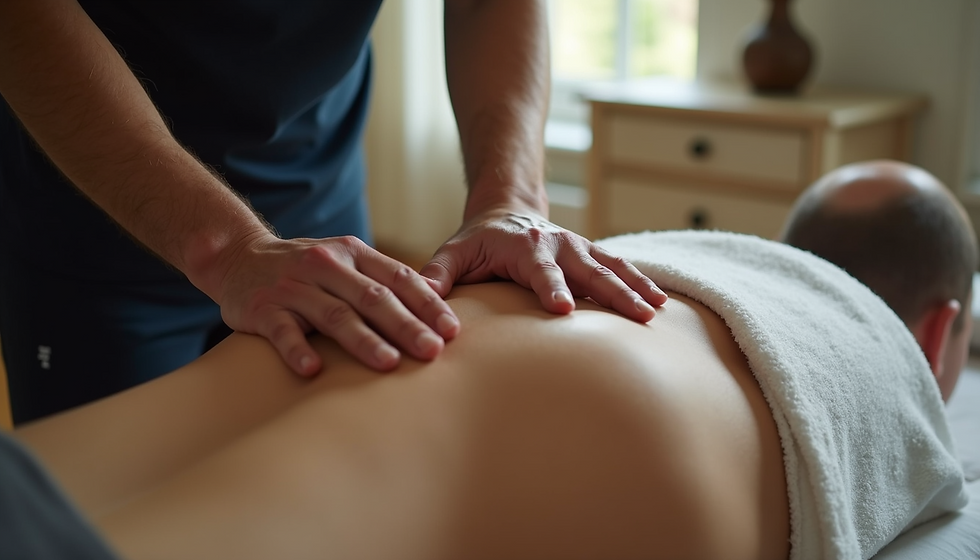The Best Sports Therapy Services for Athletes
- Filip Zeman
- Nov 4
- 4 min read
Athletes constantly push their bodies to the limit, whether in training or competition. This intense physical demand often leads to injuries, muscle fatigue, and performance plateaus. To maintain peak condition and recover effectively, many athletes turn to professional services for sports therapy. These services are designed to support physical health, prevent injury, and accelerate recovery, enabling athletes to perform at their best consistently.
Understanding the variety of sports therapy options available can help athletes make informed decisions about their care. This article explores the best services for sports therapy, highlighting their benefits, techniques, and how they contribute to athletic success.
Understanding Services for Sports Therapy: What They Offer
Services for sports therapy encompass a range of treatments and interventions aimed at improving physical function and managing sports-related injuries. These services are provided by trained therapists who specialise in musculoskeletal health and rehabilitation.
Some common offerings include:
Injury Assessment and Diagnosis: Identifying the root cause of pain or dysfunction.
Manual Therapy: Hands-on techniques such as massage, mobilisation, and manipulation to relieve pain and improve mobility.
Exercise Prescription: Tailored exercise programmes to strengthen muscles, improve flexibility, and prevent future injuries.
Rehabilitation Programmes: Structured plans to guide recovery from injury back to full athletic performance.
Pain Management: Techniques including taping, dry needling, and electrotherapy to reduce discomfort.
Performance Enhancement: Strategies to optimise movement patterns and athletic output.
These services are often integrated to provide a comprehensive approach to athlete care.

Key Benefits of Professional Sports Therapy Services
Engaging with professional sports therapy services offers numerous advantages for athletes at all levels. Here are some of the most significant benefits:
Faster Recovery from Injuries
Sports therapy accelerates healing by promoting blood flow, reducing inflammation, and restoring normal function. Therapists use evidence-based techniques to target injured tissues, helping athletes return to training sooner.
Injury Prevention
By addressing muscle imbalances, poor biomechanics, and flexibility issues, sports therapy reduces the risk of injury. Regular sessions can identify potential problems before they become serious.
Improved Performance
Therapists help athletes optimise their movement efficiency and strength. This can lead to better endurance, speed, and power during competition.
Pain Relief
Chronic pain or discomfort from overuse injuries can be managed effectively through targeted therapy, allowing athletes to maintain their training schedules.
Personalised Care
Each athlete receives a customised treatment plan based on their specific needs, sport, and goals, ensuring the most effective outcomes.
Exploring Different Techniques in Sports Therapy
Sports therapy incorporates a variety of techniques tailored to the athlete’s condition and objectives. Understanding these methods can help athletes choose the right service for their needs.
Manual Therapy
This includes massage, joint mobilisation, and soft tissue manipulation. It helps reduce muscle tension, improve circulation, and restore joint mobility.
Exercise Therapy
Therapists design specific exercises to strengthen weak muscles, improve flexibility, and correct movement patterns. This is crucial for both rehabilitation and performance enhancement.
Electrotherapy
Modalities such as ultrasound, TENS (Transcutaneous Electrical Nerve Stimulation), and laser therapy are used to reduce pain and inflammation and promote tissue healing.
Dry Needling and Acupuncture
These techniques involve inserting fine needles into trigger points or specific areas to relieve muscle tightness and pain.
Taping and Bracing
Supportive taping techniques help stabilise joints and muscles during activity, reducing strain and preventing injury.

How to Choose the Best Services for Sports Therapy
Selecting the right sports therapy service is essential for effective treatment and optimal results. Here are some practical tips to guide the decision-making process:
Check Qualifications and Experience
Ensure the therapist is fully qualified and experienced in sports therapy. Look for certifications and specialisations relevant to your sport.
Consider Specialisation
Some therapists specialise in particular sports or injury types. Choosing a specialist can provide more targeted care.
Evaluate Treatment Approaches
Ask about the techniques and modalities used. The best services offer a combination of manual therapy, exercise prescription, and modern technologies.
Look for Personalised Programmes
Avoid one-size-fits-all treatments. The therapist should tailor the plan to your individual needs and goals.
Read Reviews and Testimonials
Feedback from other athletes can provide insight into the quality and effectiveness of the service.
Accessibility and Convenience
Consider location, appointment availability, and whether the service offers ongoing support or remote consultations.
By following these guidelines, athletes can find a sports therapy provider that best supports their health and performance.
Maximising the Benefits of Sports Therapy Services
To get the most out of sports therapy, athletes should actively engage in their treatment and recovery process. Here are some actionable recommendations:
Communicate Openly
Share detailed information about your symptoms, training routine, and goals with your therapist.
Follow the Programme
Adhere strictly to prescribed exercises and advice to ensure effective rehabilitation.
Maintain Consistency
Regular therapy sessions and ongoing maintenance can prevent setbacks.
Incorporate Lifestyle Changes
Nutrition, hydration, sleep, and stress management all impact recovery and performance.
Use Therapy as a Preventative Tool
Don’t wait for injury to seek help. Regular check-ups can keep you in top condition.
For athletes seeking expert care, sports therapy services provide a valuable resource to enhance physical health and athletic longevity.
Embracing a Healthier Athletic Future
Investing in professional services for sports therapy is a proactive step towards sustaining athletic performance and wellbeing. Whether recovering from injury or aiming to improve, these services offer tailored support that addresses the unique demands of sport.
By understanding the options available and choosing the right provider, athletes can enjoy faster recovery, reduced injury risk, and improved performance. This holistic approach to physical care is essential for anyone serious about their sport.
Taking advantage of expert sports therapy services ensures that athletes not only reach their goals but also maintain their health for years to come.




Comments